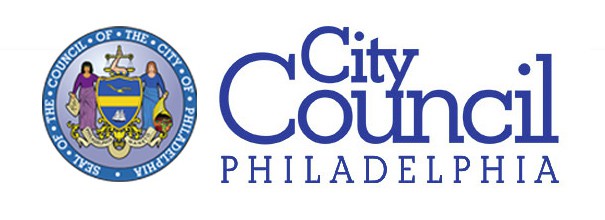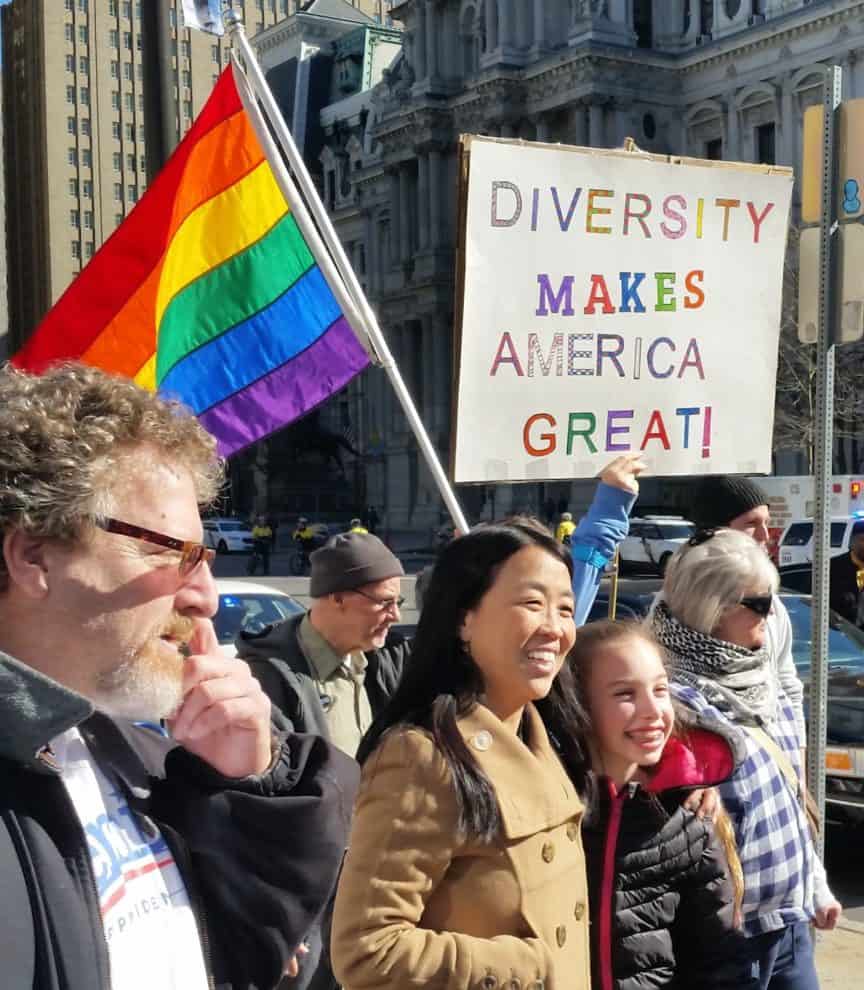Philadelphia, Aug. 21, 2017 – Councilwoman Helen Gym (At-Large) and civil rights leaders on Monday renewed a call for inclusive community dialogue on the future of the Frank Rizzo statue, currently located across the street from City Hall on Thomas Paine Plaza.
“Our monuments and public art don’t just reflect our past; they tell the story of what values we choose to honor and uplift,” Councilwoman Gym said. “There should be no doubt that the Frank Rizzo statue simply does not belong at the footsteps of City Hall and our municipal government, which exists to serve and protect all Philadelphians. We must proceed with a dialogue on his rightful place in history peacefully and respectfully.”
Councilwoman Gym continued: “There will be a City-led public process for moving the Rizzo statue to a location better reflective of its complicated history. Monuments are not about permanence; they move and change as cities evolve.”
“There will be a City-led public process for moving the Rizzo statue to a location better reflective of its complicated history. Monuments are not about permanence; they move and change as cities evolve.”
Last summer, activists again called to remove the statue before Philadelphia welcomed thousands of visitors for the Democratic National Convention. Today, civil rights and community leaders who have long advocated for the Rizzo statue to be relocated expressed the urgent need for a renewed public dialogue on the former mayor’s divisive legacy, the painful history of structural racism in Philadelphia’s recent past, and the path forward toward a City in which all people are made to feel welcome and included in public spaces.
“As a youth growing up in South Philadelphia, I was part of the first generation of students of color who were bussed into majority white schools. I would urge those who saw only the good side of Frank Rizzo because of the color of their skin to strive for empathy with those of us who only saw the bad side of Frank Rizzo because of the color of our skin,” said the Reverend Gregory Holston, executive director of Philadelphians Organized to Witness, Empower and Rebuild (POWER) and senior pastor of Janes Memorial United Methodist Church. “Under Frank Rizzo, black youth like myself were viewed by the City government that was supposed to protect us as criminals. And we, as a City, have been trying to reject the legacy of his policies and actions ever since. A renewed conversation about the placement of his statue is in order.”
Minister Rodney Muhammad, president of the NAACP-Philadelphia chapter, added: “Our work represents years of pushing back against the policies that Frank Rizzo embodied, and that’s why the statue’s placement isn’t appropriate. The purposeful placement of it there — directly across from City Hall where government business is conducted and directly in front of the Municipal Services Building where City agencies serve the people — is not reflective of either the progress we have made or of the goals we seek to achieve. The Philadelphia we are shaping is moving forward from the past.”
Rabbi Ari Lev Fornari of Kol Tzedek Synagogue said: “As people of conscience and faith, it is our responsibility to uproot racism and build a nation based on the liberation of all people. Our monuments too often fail to reflect our proudly multicultural and multiracial city. It’s time to re-envision our public spaces so they tell a more inclusive, redemptive story.”
“Our nation is at a turning point. People of color, immigrants, LGBTQ people, and women, taken together, comprise the majority of our country,” said Erika Almiron, executive director of Juntos. “Yet we continue to struggle against ahistorical public statues and memorials that obscure or even glorify oppression and abuse waged by white men. To become the inclusive city most Philadelphians want starts with a public and accountable conversation about the Rizzo statue, a statue of a former mayor who urged Philadelphians to ‘vote white,’ and the degree of prominence it has in public spaces.”
“For many older members of Philadelphia’s LGBTQ community, the memory of Frank Rizzo’s police raids on community gathering spaces is still vivid,” said Malcolm Kenyatta, co-chair of Liberty City LGBT Democratic Club. “While removing the statue is no doubt symbolic, it can be an important step to confront our history and the broader policy impacts that continue to wreak havoc in our communities. Our city must stand up and do the hard work of dismantling discriminatory systems such as the school-to-prison pipeline, continued police violence, and violence against trans women of color. Frank Rizzo didn’t believe in equality and liberty for all, and his image should not greet citizens and visitors in the very heart of our city.”
Reverend Jay Broadnax of the Black Clergy of Philadelphia added, “Philadelphia is the ‘City of Brotherly Love and Sisterly Affection,’ established to symbolize for our nation the principles of justice, equity, and inclusion. It runs counter to our ideals and goals to have, in our central square, a statue dedicated to a man whose leadership exacerbated racial tensions and escalated police brutality to the point where they were nationally reputed. Philadelphia’s institutions including law enforcement work every day to realize a more just city. Those hard-fought efforts deserve to be reflected in our central square. Therefore, I believe that Frank Rizzo’s statue must be removed from Thomas Paine Plaza.”
Councilwoman Gym continued: “As we work to transform the symbols of our country’s shameful history of racial discrimination and injustice, we must continue to challenge the legacies of racism and inequality which live today. This includes reinvesting in our schools, reforming our criminal justice system, investing in development for all neighborhoods, and telling the honest story of who we are, where we’ve come from, and where we’re going.
“I am grateful for the outpouring of support and gratitude from many who are eager to see a more inclusive and welcoming Thomas Paine Plaza. I believe our city is ready to send our children and youth a strong message that we are building a new future in which they are all represented and cherished.”
# # # # # #


